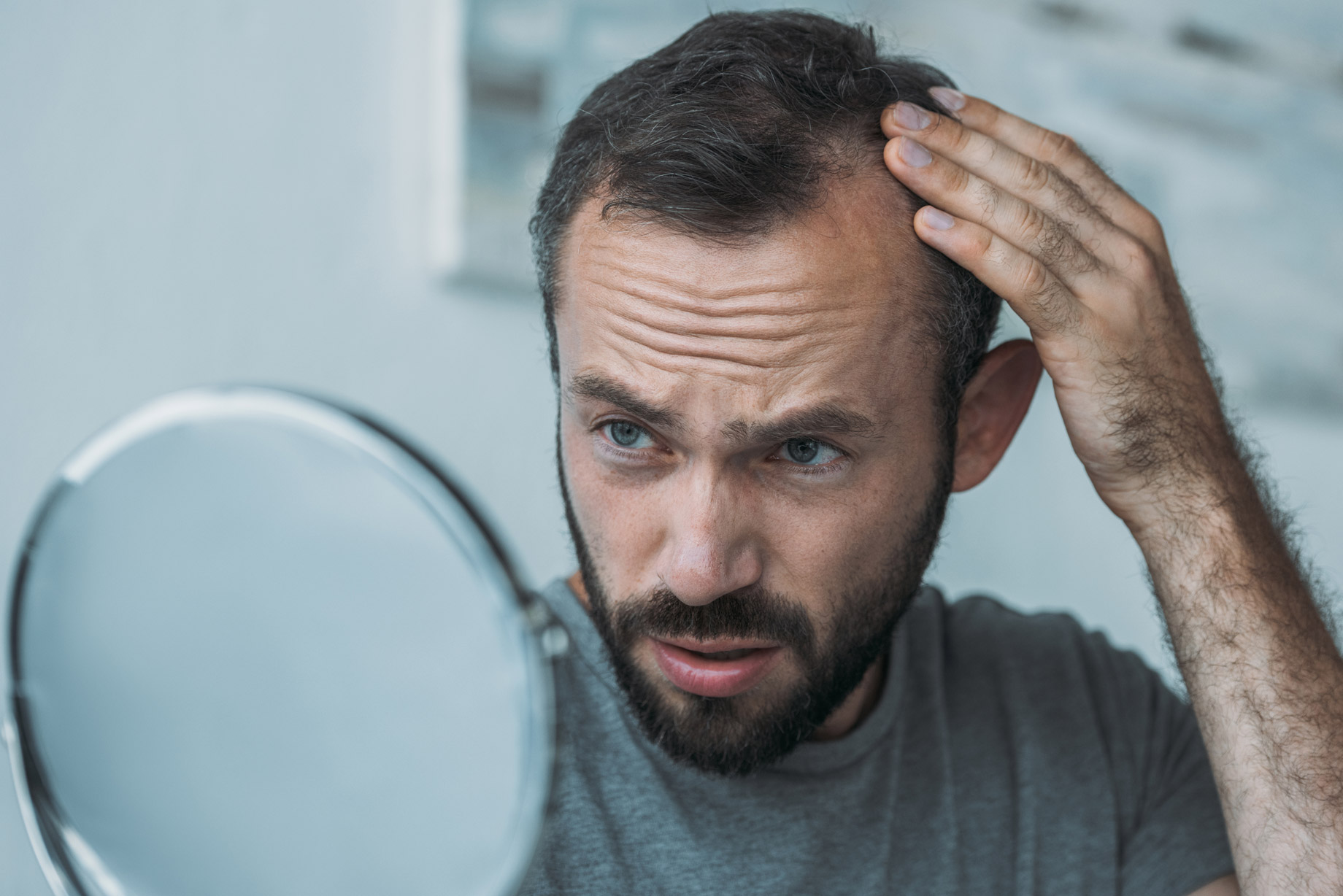Alopecia Areata: What Causes this Hair Loss?

Clumps of hair on the pillow. Bald patches on the scalp. Sudden loss of eyebrows and eyelashes.
These symptoms, common to sufferers of alopecia areata, have popped up in the news lately as celebrities and political figures go public with a condition that affects about 2% of the population.
Earlier this year, Massachusetts Rep. Ayanna Pressley talked poignantly about her “very personal” battle with the autoimmune disease. A picture of her bald head made headlines because the 47-year-old congresswoman had once been known for a signature hairstyle known as the Senegalese twists.
She’s not the only famous person to open up about a condition that strikes as many as 7 million Americans, according to the National Alopecia Areata Foundation. Actress Neve Campbell developed alopecia areata at 23, most likely spurred on by severe stress, she has said. Other actresses with the disease include Keira Knightly and Viola Davis.
But it’s not just women struggling with patchwork hair loss.
NFL Quarterback Joshua Dobbs was diagnosed in third grade, and by his high school senior year, his eyebrows and eyelashes had started to fall out. Legendary actors Nicholas Cage and Robert Pattinson, he of vampire fame, have also been diagnosed, and Pattinson recently admitted to an interviewer that he had to wear a hairpiece for the final “Twilight” film.
While the disease is treatable, “in severe cases it can cause complete loss of scalp hair and even of eyebrows, eyelashes, and body hair,” says Dr. Antonella Tosti, a dermatologist with the University of Miami Health System. Dobbs, for example, ended up bald in college, even after treatment with cortisone shots.
Hair does grow back, but it’s also common for patients to relapse. And those relapses tend to be more difficult to treat, adds Dr. Tosti, author of numerous books on hair diseases and hair care, including “ Hair facts: everything you ever wanted to know about hair loss and hair care.”
Alopecia areata can occur at any age.
“It runs in families and can be associated with other autoimmune diseases, particularly thyroid diseases,” Dr. Tosti said. In fact, one-fifth of cases occur when there’s a family history of autoimmune conditions, such as rheumatoid arthritis or Type 1 diabetes. In the case of alopecia areata, hair follicles are attacked by the immune system, leading them to stop producing hair.
Scientists don’t know why this happens, but researchers believe genetics plays a big role, with environmental factors probably triggering the disease for those already predisposed to it. There are no preventive measures to avert it, either. “Stress often triggers the disease,” Dr. Tosti says, “but the disease itself causes a lot of stress.”
She recommends that a person with a “sudden onset” of hairless patches should immediately see a dermatologist. Don’t wait for more clumps of hair to fall off. “Excessive hair shedding may or may not be evident,” she explains.
What’s more, hair loss can be a symptom of other medical conditions, including hypothyroidism, vitamin deficiencies, lupus, even lymphomas.
When treatment proves effective for alopecia areata, it’s not only patients who feel a surge of relief and confidence “One of the nicest things that happened to me was a little girl who thanked me because she was happy for her father,” Dr. Tosti recalls. “She said: ‘Thank you, doctor, for growing back the hair of my dad!’”
Treatment depends on the age of the patient and the severity of the disease, but Dr. Tosti employs steroids (topical, intralesional, and systemic) as well as new treatments, such as JAK inhibitors, which are undergoing clinical studies. She supervises these trials at UM. (JAKs is a type of medication that inhibits the activity of one or more of the Janus kinase family of enzymes. The drugs have already been approved to treat bone marrow disorders and rheumatoid arthritis, and they show promise as an option for alopecia areata, eczema, and vitiligo.)
Dr. Tosti also offers a few words of encouragement for those grieving the loss of their tresses. “Hair follicles are never destroyed, and hair of regrowth is always possible.”

Ana Veciana-Suarez, Guest Columnist
Ana is a regular contributor to the University of Miami Health System. She is a renowned journalist and author, who has worked at The Miami Herald, The Miami News, and The Palm Beach Post. Visit her website at anavecianasuarez.com or follow @AnaVeciana on Twitter.
Tags: Alopecia Areata, balding, Dr. Antonella Tosti, hair loss
